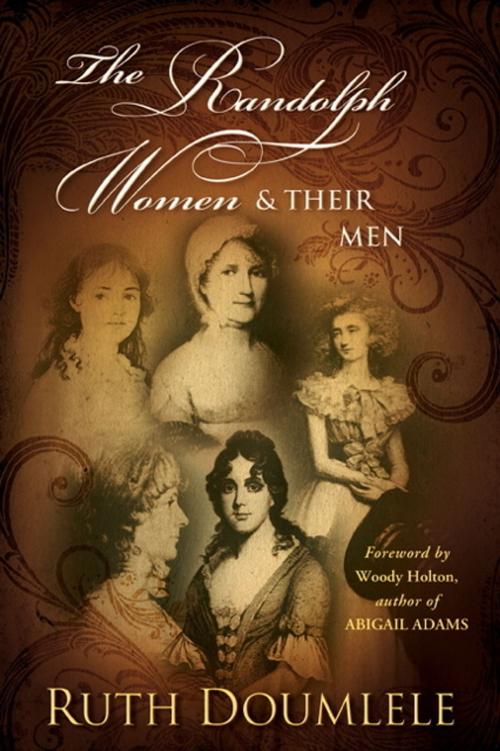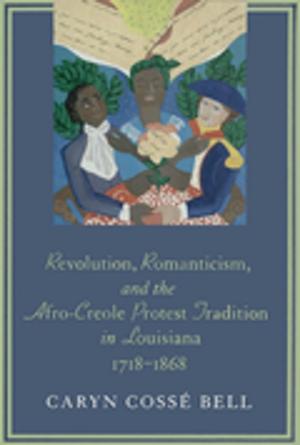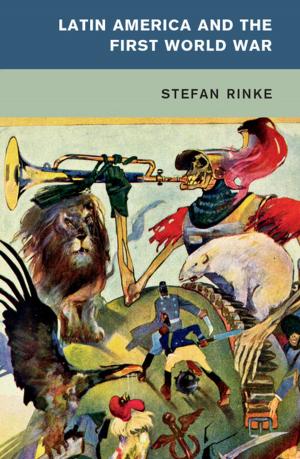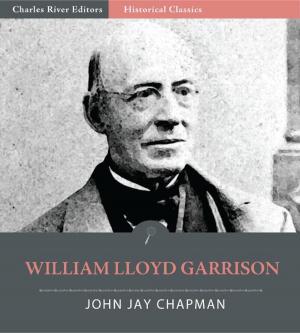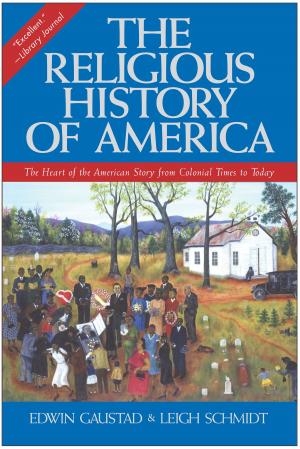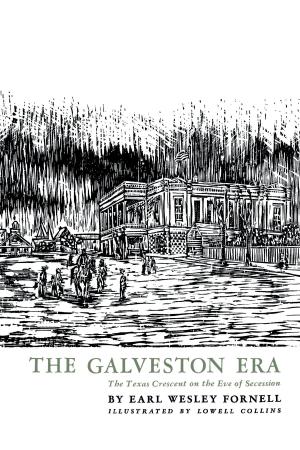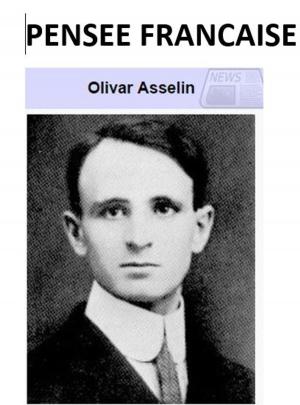| Author: | Ruth Doumlele | ISBN: | 9781465971296 |
| Publisher: | Ruth Doumlele | Publication: | October 4, 2011 |
| Imprint: | Smashwords Edition | Language: | English |
| Author: | Ruth Doumlele |
| ISBN: | 9781465971296 |
| Publisher: | Ruth Doumlele |
| Publication: | October 4, 2011 |
| Imprint: | Smashwords Edition |
| Language: | English |
William Randolph I, the family patriarch, settled in Virginia around 1670 and gradually acquired tobacco plantations and vast land holdings. Powerful friends, such as British Governor Berkeley, enhanced his political clout. He served in the House of Burgesses and was a founder of the College of William and Mary in Wiilliamsburg. He and his wife, Mary Isham of Bermuda Hundred, produced seven sons and two daughters who inherited land and property.
Their descendants married Randolphs who married first, second, and third cousins until the family genealogy resembled a “tangle of fish hooks.” It was said that “no one was good enough for a Randolph except another Randolph.” This intense interbreeding produced character flaws, hereditary disease, and personality distortions. Virginians at odds with the Randolph traits commented, “If God had been the God of Virginia, he would have struck William Randolph of Turkey Island with sterility.” Even so, the Randolph courage, richness of intellect, and eloquence also produced geniuses, statesmen, and generals.
This true story of the Randolph women and their men examines the intertwining of several Randolph families of the Revolutionary and post-Revolutionary War era.
Thomas Randolph of Tuckahoe’s daughter, Mary, was found in flagrante delicto with Reverend James Keith. She followed him to a distant parish. They were married and she became the grandmother of John Marshall, chief justice of the Supreme Court.
Mary Randolph, called Molly, married her cousin, David Meade Randolph. They built a “city plantation,” Moldavia, in Richmond. In the spacious home they entertained with “sumptuous repasts” and “grand and glorious balls.” Molly was referred to as the “Queen of the Realm,” by Samuel Mordecai, a nineteenth-century historian, for her fabulous entertaining. Later, she opened a boarding house and became a successful businesswoman. She published the first American cookbook, which included recipes from the Tuckahoe menus.
Ann Cary Randolph, called “Nancy,” a few months younger than Judith, was sunnier, more athletic. A descendant, Francis Biddle, described her as being “full of the delight of living, hot-blooded, careless, haphazard.” Historian A. J. Eckenrode described her as “handsome, determined in character, and infinitely courageous.” Her letters chronicle the sad events of her life, evicted from Tuckahoe, living subserviently with various relatives, penniless in a nonexistent job market for a woman of her training and social standing. Her seduction and impregnation by her brother-in-law, Judith’s husband, Richard, reduced her to a “trull,” a fallen woman. She found happiness for a few years as the wife of Northern aristocrat and statesman Gouverneur Morris.
John Randolph of Roanoke became known as the most eloquent man of his time. He was erratic and brilliant, an ardent states rightist. His rapier-like verbal attacks seldom missed their mark. Although seemingly destined for greatness in public life, he destroyed his career when he publicly turned on President Jefferson.
Thomas Jefferson descended from Isham of Dungeness through his daughter Jane, who married Peter Jefferson. Thomas Jefferson’s two daughters were Martha and Maria. Martha was “homely,” six feet tall and angular, “a delicate likeness of her father,” with a frank and affectionate manner. She married her cousin, Thomas Randolph, Jr. of Tuckahoe, a skilled horseman, hard-working, dedicated to his family. Her unusual and extreme love for her father doomed their happiness, leaving him sad and embittered. Maria was beautiful, simple, and reserved, “the fairest flower which my eyes ever beheld.” She married her cousin, John Eppes, and died young in childbirth.
William Randolph I, the family patriarch, settled in Virginia around 1670 and gradually acquired tobacco plantations and vast land holdings. Powerful friends, such as British Governor Berkeley, enhanced his political clout. He served in the House of Burgesses and was a founder of the College of William and Mary in Wiilliamsburg. He and his wife, Mary Isham of Bermuda Hundred, produced seven sons and two daughters who inherited land and property.
Their descendants married Randolphs who married first, second, and third cousins until the family genealogy resembled a “tangle of fish hooks.” It was said that “no one was good enough for a Randolph except another Randolph.” This intense interbreeding produced character flaws, hereditary disease, and personality distortions. Virginians at odds with the Randolph traits commented, “If God had been the God of Virginia, he would have struck William Randolph of Turkey Island with sterility.” Even so, the Randolph courage, richness of intellect, and eloquence also produced geniuses, statesmen, and generals.
This true story of the Randolph women and their men examines the intertwining of several Randolph families of the Revolutionary and post-Revolutionary War era.
Thomas Randolph of Tuckahoe’s daughter, Mary, was found in flagrante delicto with Reverend James Keith. She followed him to a distant parish. They were married and she became the grandmother of John Marshall, chief justice of the Supreme Court.
Mary Randolph, called Molly, married her cousin, David Meade Randolph. They built a “city plantation,” Moldavia, in Richmond. In the spacious home they entertained with “sumptuous repasts” and “grand and glorious balls.” Molly was referred to as the “Queen of the Realm,” by Samuel Mordecai, a nineteenth-century historian, for her fabulous entertaining. Later, she opened a boarding house and became a successful businesswoman. She published the first American cookbook, which included recipes from the Tuckahoe menus.
Ann Cary Randolph, called “Nancy,” a few months younger than Judith, was sunnier, more athletic. A descendant, Francis Biddle, described her as being “full of the delight of living, hot-blooded, careless, haphazard.” Historian A. J. Eckenrode described her as “handsome, determined in character, and infinitely courageous.” Her letters chronicle the sad events of her life, evicted from Tuckahoe, living subserviently with various relatives, penniless in a nonexistent job market for a woman of her training and social standing. Her seduction and impregnation by her brother-in-law, Judith’s husband, Richard, reduced her to a “trull,” a fallen woman. She found happiness for a few years as the wife of Northern aristocrat and statesman Gouverneur Morris.
John Randolph of Roanoke became known as the most eloquent man of his time. He was erratic and brilliant, an ardent states rightist. His rapier-like verbal attacks seldom missed their mark. Although seemingly destined for greatness in public life, he destroyed his career when he publicly turned on President Jefferson.
Thomas Jefferson descended from Isham of Dungeness through his daughter Jane, who married Peter Jefferson. Thomas Jefferson’s two daughters were Martha and Maria. Martha was “homely,” six feet tall and angular, “a delicate likeness of her father,” with a frank and affectionate manner. She married her cousin, Thomas Randolph, Jr. of Tuckahoe, a skilled horseman, hard-working, dedicated to his family. Her unusual and extreme love for her father doomed their happiness, leaving him sad and embittered. Maria was beautiful, simple, and reserved, “the fairest flower which my eyes ever beheld.” She married her cousin, John Eppes, and died young in childbirth.
